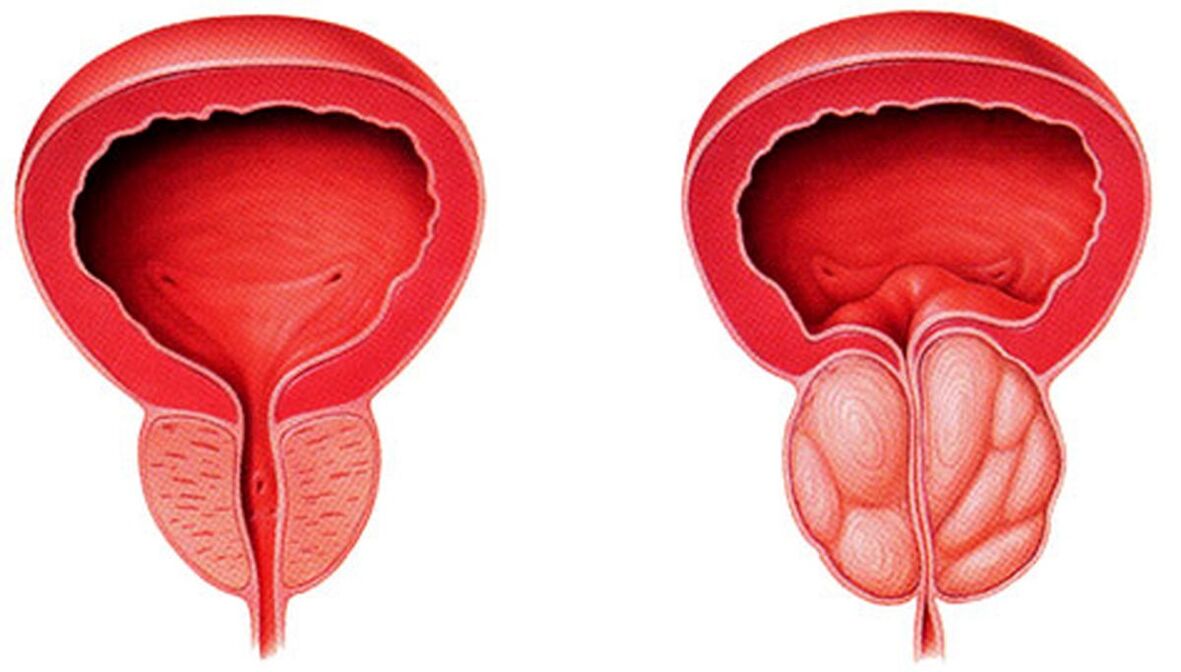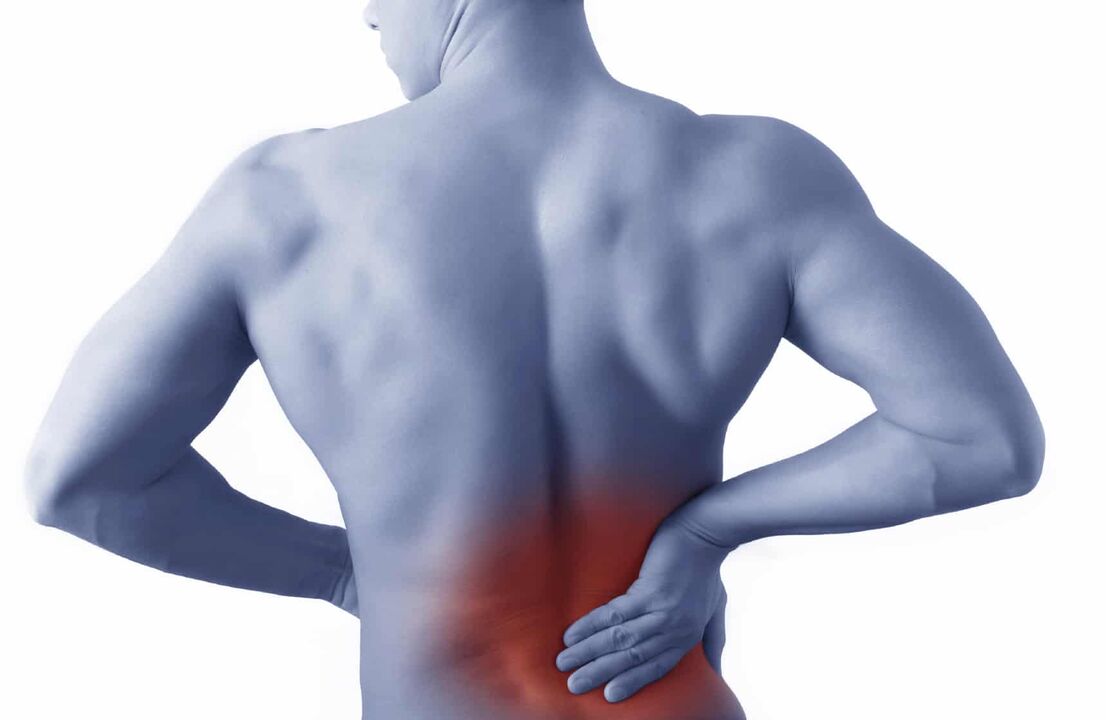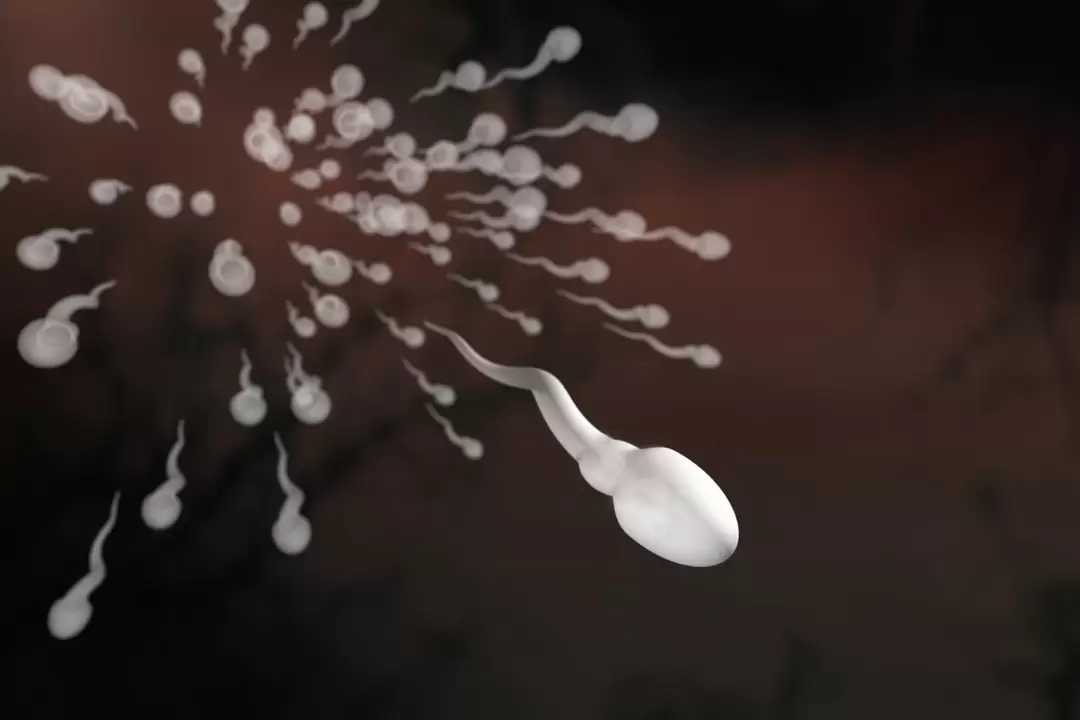The prevalence of prostatitis in men is high, which is related to a sedentary lifestyle, unhealthy diet, and a large number of hazards in modern life. According to doctors, treatment for the condition should be started as early as possible. To do this, every representative of the dominant sex should know what the first signs of prostatitis in men are. The symptoms that accompany the different forms of the disease, what the exacerbation looks like, the acute and chronic course, and a little bit about treatment, will be discussed in the article.

General information
Symptoms and signs of prostatitis and their treatment are very diverse and are associated with the presence of several diseases. First, male prostatitis is:
- Spicy. Often have purulent properties. Signs of inflammation in men, both general and specific, are expressed to the greatest extent and the pathogen is the pathogenic (pathogenic) flora. Therefore, in most cases the treatment for men is to prescribe antibiotics.
- chronic. If treatment of men is incorrect or untimely, it may be the result of an acute process. The obvious symptoms accompanying the purulent process disappear, the symptoms are less pronounced. During remission, the characteristic signs of the process may disappear completely. Symptoms increase as chronic prostatitis worsens, but are less intense than acute inflammation.
Chronic prostatitis in men can initially develop without signs of previous acute inflammation. In this case, prostatitis is usually characterized by stagnation, that is, caused by the sedentary lifestyle of men, there is a chronic disease that affects the speed of blood circulation to the pelvic organs.
It is important to know and be able to understand the first signs and symptoms of prostatitis, as this will influence what treatment is needed for the disease in the future. If, in the case of bacterial prostatitis, more general symptoms of toxicity, treatment must include antibiotic therapy (it does not matter whether it is a tablet or an injection of antibiotics), then in the case of a stagnant process, the treatment of stagnationFirst and foremost, ie lifestyle changes and treatment of comorbidities.
Enlarged photo of prostatitis:

- Violation of the function of the urinary system. In other words, this group of symptoms is called "urination disorders. "This should also include symptoms that indicate the development of an inflammatory process in the prostate.
- Sexual disorders specific to prostatitis.
- Due to changes in the nervous system of the main process. characteristics of the disease.
More details about each group of prostatitis signs are discussed below.
concrete expression
The main and often the first sign of prostate inflammation is pain. Pain can be of different nature. The nature of pain can vary widely. There are characteristic localizations such as tingling, stinging, and cutting pain. If this is an acute process, they can significantly affect a man's life, causing disruptions in sleep and performance. In chronic prostatitis in remission, symptoms are mild, if not completely absent.
The typical localization of prostatitis pain is the pelvic region. Men experience pain in the perineum, lower abdomen, and lower back. They are often given to the penis, scrotum, testicles. Pain can accompany urination and defecation and is worse with erection and ejaculation. The first characteristic sign of calculous prostatitis may be pain, the intensity and timing of which depends on exercise. They appear or intensify if a person walks quickly, jumps, or bends over. Similar symptoms are due to mechanical irritation of the duct wall by the stone.

Common signs of prostatitis are various violations of the urination process. Dysuria is manifested by the need to urinate frequently, incomplete bladder emptying, and a false urge to urinate. The nature of urination can also change: Men complain of slow or intermittent urine flow and need to make an effort to urinate normally. A scary, though not the first, sign of prostatitis is acute urinary retention. Symptoms develop with acute inflammation, accompanied by severe swelling of the prostate.
Urinary retention occurs when prostatitis is associated with adenoma. Acute conditions can also occur in cases of worsening chronic prostatitis in men, but urinary retention is less severe and less common. More often, men simply cannot hold large amounts of urine and need to go to the toilet frequently.
Dysuria and pain are the most common first symptoms of any form of prostatitis. They are usually the first and predominant clinical use for acute or exacerbation of chronic prostatitis.
Unpleasant for most men, although the first sign of prostatitis is rarely sexual dysfunction. Disorders in the intimate sphere are often manifestations of chronic inflammatory processes and are of a different nature and therefore different treatments. First, there is an erection problem. She may become lethargic, or the man may not be able to fully finish intercourse. Disturbed ejaculation: Preterm birth is more common. The usual sensory acuity wears off over time. From a purely physical problem to a psychological one. A libido disorder (sex drive disorder) develops, orgasm problems appear. These signs can negatively affect the general state of the nervous system, leading to decreased mood, depression, and sleep disturbances. One no longer feels useful to oneself.
Being constantly under pressure and being overwhelmed by one's own situation can provoke aggressive behavior, irritability, and conflict in some men. In such clinical situations, sometimes the treatment of prostatitis alone does not lead to normalization of the mental sphere. Strong gender representation may require an experienced psychologist or even pills from the antidepressant group, which should be taken even after treatment for the underlying condition has ended.
As the sexual realm becomes disrupted, sperm also changes. For example, suppurative prostatitis will be accompanied by changes in the color and smell of semen. Depending on the pathogen causing the process, the biological fluid can turn yellow, green, chartreuse. Sometimes there is discharge from the urethral opening and outside sex. They also differ in color, smell, and other characteristics, although mucus, a clear discharge in the morning, is more common. Pathological impurities in urine can be detected after men urinate themselves. We're talking about the appearance of mucus lines, which are also more common in the urine part of the morning. Various pathological impurities in many cases remain the first and only manifestation of the inflammatory process.

The only sign of chronic flaccid prostatitis may be infertility. Often, during examinations of men who are unable to conceive, representatives of sexually strong men reveal an old inflammatory process that leads to the disruption of normal sperm formation. During the examination, it was found that the male mature sperm decreased and the mobility of male germ cells decreased.
Impurities in semen may be bloody, which is a sign of calculous prostatitis. This condition is called erythrospermia. Symptoms appear as a result of trauma to the wall by the stone and are short-lived. Since the first signs of prostatitis are rare, all other diseases causing similar symptoms should always be ruled out when mixed blood appears in the semen.
general performance
The general symptoms of prostatitis usually imply a general inflammatory response, indicating the development of an acute inflammatory process in the body. Naturally, in chronic prostatitis, these manifestations are manifested only when we are not talking about a marked exacerbation. Signs of an active inflammatory process are:
- Elevated body temperature. The degree of increase is related to the activity of inflammation. In acute bacterial prostatitis, especially with abscess formation, the temperature can reach 39-40 degrees. This condition is accompanied by other obvious symptoms of the disease. Temperature can also be the first sign of viral prostatitis.
- General weakness, headache.
- Chills. Chills are characteristic of bacterial prostatitis.
- Muscle ache.

General signs of inflammation are rarely the only signs of prostatitis, but there are exceptions. The chronic slow form of the disease, with less severity of specific symptoms, sometimes leads to a prolonged search for the cause of a subfebrile state (body temperature rises to 37. 2-37. 3 degrees), which is actually prostatitis. In this case, the diagnosis of the disease is established after examinations and other studies, including the presence or absence of pathogenic microorganisms in the secretions of the seeded prostate.
Clinic dependence on disease stage and type
As mentioned above, the clinical manifestations are dependent on the type and stage of prostatitis. Let's discuss each of them in more detail.
The first stage of the process is characterized by general symptoms of inflammation over changes in the sexual domain. The main symptoms of this disease are pain, intoxication, dysuria (mainly cramping, painful urination). Some of the more sexual representatives will have sperm and urine changes, as well as penile secretions. If the man does not receive adequate treatment at this stage, the symptoms will disappear and the prostatitis will move to the next stage.
The inflammatory process without proper treatment will rarely end with the complete recovery of the organ. Basically, the result of the disease will be the formation of fibrous or connective tissue that replaces the normal tissue of the prostate. Men may not notice a worsening of urinary disturbances for a marked improvement in general condition. A person needs to go to the toilet "in small ways" more frequently, and sexual changes gradually increase, but symptoms are not obvious.

Prostatitis advances to the next stage without due attention to the manifestations and signs of the inflammatory process still present. In fact, it is a chronic process clinically characterized by alternating periods of remission and exacerbation. The first signs of chronic disease may not be present because the disease does not always progress positively. However, progression leads to the formation of thick fibrous scars in the prostate tissue, which will lead to the main signs of the condition.
The first of the symptoms is dysuria, which is characterized by a slow flow of urine, frequent urination, and a feeling of incomplete bladder emptying. Obstacles in the sexual sphere are added: erection problems, premature ejaculation, impossibility of full intercourse.
Certain forms of prostatitis also have their own characteristics. What has been said about the acute and chronic phases of bacterial processes. The signs of congestive prostatitis are listed below:
- Low-intensity long-term pain syndrome (up to 3-6 months). Pain is limited.
- There were no inflammatory changes in prostate and urine secretion.
- When interviewing a man, it may be discovered that he has factors that predispose to the development of small pelvic bruising.
- In the clinical presentation, as the first symptoms of the disease, the phenomenon of sexual domain invasion and dysuria are revealed.
Asymptomatic prostatitis is also characteristic. Naturally, this process has no clinical manifestations. The disease is suspected after changes in the general analysis of urine are detected. After the examination, an accurate diagnosis can be made and treatment prescribed.
Regardless of the form of prostatitis in men, any stage of the process can lead to the development of serious complications. They can be inflammatory processes in any organ of the urinary system (kidneys, bladder), which in turn can lead to the appearance of urolithiasis and even the development of chronic renal failure. Therefore, in order to prevent serious complications, prostatitis needs to be treated in time, and to be treated in time, of course, it is necessary to be able to recognize the first signs of the disease and seek medical attention in time.





























